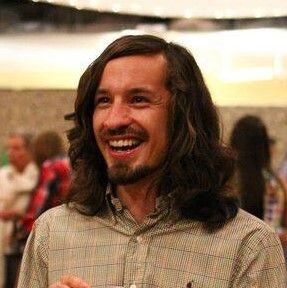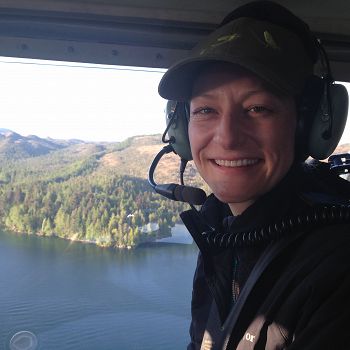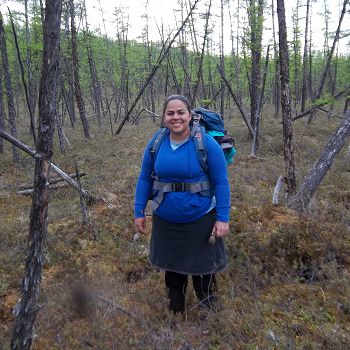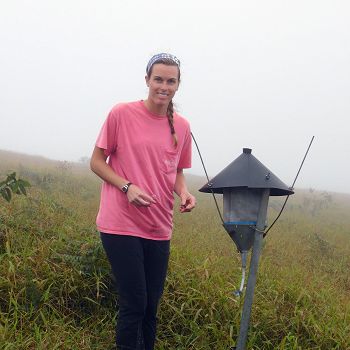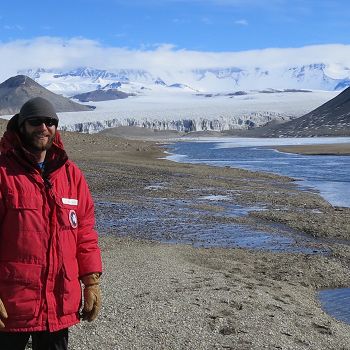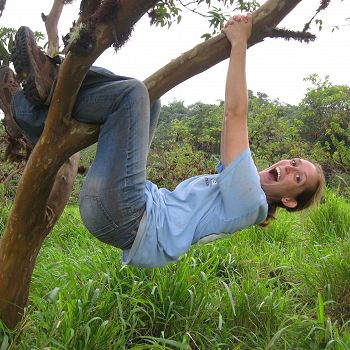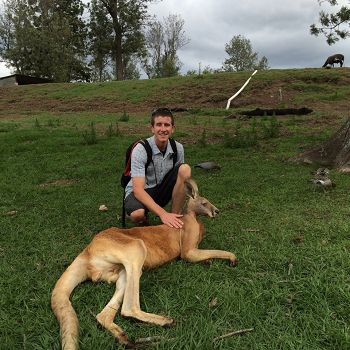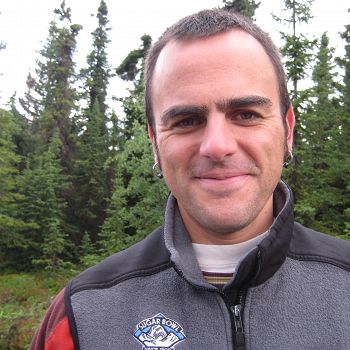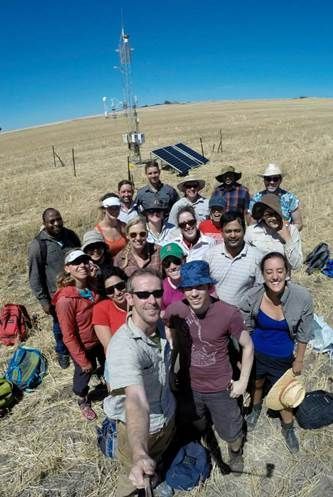International Scholars
- In recognition of the global nature of Critical Zone (CZ) science, the National Science Foundation has provided funding to the CZ Observatory (CZO) Science Across Virtual Institutes (SAVI) project to enable travel to CZO sites or pre-eminent laboratories overseas to further the investigation of the Critical Zone. A major goal of the SAVI is to develop international collaborations, including young scientists who will advance CZ science throughout their careers.
NSF Science Across Virtual Institutes (SAVI) logo
CZO International Scholars:
2019 | 2018 | 2017 | 2016 | 2015
2019 SAVI International Scholars:
- Jesse Hahm (Simon Fraser University)
- Caitlin Hodges (Pennsylvania State University)
Jesse Hahm
Simon Fraser University
Jesse Hahm recently joined the Department of Geography at Simon Fraser University as an assistant professor in the field of hydrology, following a postdoc at the University of Texas-Austin and graduate studies at the University of California-Berkeley and the University of Wyoming. He worked at both the Eel River and Southern Sierra Critical Zone Observatories for his PhD and MSc studies, respectively.
With support from the CZO-SAVI program, Jesse recently began a new collaboration with Dr. Thomas Hickler at the Senckenberg Biodiversity and Climate Research Centre in Frankfurt, Germany. In collaboration with Drs. David Dralle and Matthew Forrest, the team sought to incorporate new mechanistic insights regarding plant-accessible water storage occurring in weathered bedrock into a state-of-the-art Dynamic Global Vegetation Models (DGVM). The collaboration enabled knowledge transfer between a primarily field scientist (Hahm) and modeler (Hickler), whereby insights from years of field monitoring of seasonal water storage within the weathered bedrock unsaturated zone at the Eel River CZO were used to create and parameterize new subsurface water storage and runoff generation modules within the DGVM. This resulted in significant improvements in simulated water partitioning (e.g., seasonal evapotranspiration fluxes) and plant productivity over previous model versions which relied solely on distributed soil maps to determine plant-available water storage.
Caitlin Hodges
Pennsylvania State University
Caitlin is currently a third-year Ph.D. student at Penn State University studying soil biogeochemistry at the Susquehanna Shale Hills CZO (SSHCZO) in Dr. Jason Kaye’s lab. Her research at the SSHCZO focuses on the role of anaerobic respiration, especially microbially-mediated iron and manganese reduction, in controlling soil carbon and nutrient fluxes.
She used her SAVI International Scholars funding to develop a collaboration with Dr. Amy Austin, Professor of Ecology at University of Buenos Aires in Argentina. Caitlin traveled to Buenos Aires to work Dr. Austin’s lab and extract archived soils from a volcanic climate gradient in Patagonia for leachable metals. This climate gradient is singular in that at each point along the gradient there are paired planted pine and natural vegetation plots. All pines were planted at the same time and therefore can be used to study the effects of afforestation on soil development and nutrient cycling along a precipitation gradient. The results from this work will demonstrate the changes in metal biogeochemical cycling in soils due to afforestation. Caitlin also traveled to Patagonia with Dr. Austin and Dr. Lucía Vivanco (pictured left with Hodges) to collaborate on a field project investigating the role of manganese, sodium, and magnesium in litter decomposition. This work is ongoing but will elucidate the role of secondary and micronutrients in controlling litter decomposition rates and soil carbon concentrations.
2018 SAVI International Scholars:
- María Chapela-Lara (University of New Hampshire)
- David Dralle (University of California-Berkeley)
- Emma Harrison (Scripps Institution of Oceanography)
- James Knighton (Cornell University)
- Erin Rooney (Oregon State University)
María Chapela-Lara
University of New Hampshire
María Chapela-Lara is a geochemist, broadly interested in weathering processes in the tropics. She is currently a postdoctoral researcher at the University of New Hampshire, working with Prof. William McDowell and associated with the Luquillo CZO (LCZO). Maria’s work focuses on the cycling of inorganic nutrients within the CZ, using several traditional and non-traditional (Mg and Li isotopes) tracers to differentiate biological vs. geochemical components of these cycles.
In previous work, Maria followed the Mg cycle at the LCZO's andesitic Bisley catchment and found a decoupling between the Mg sources used by vegetation (mainly atmospheric) and fed to the stream during baseflow (chlorite dissolution). To investigate the role of lithology in this decoupling, Maria travelled to the German Research Centre for Geosciences (GFZ) in Potsdam, Germany, where she worked with Dr. Micheal Henehan to analyze the Li and Mg isotope composition of the LCZO’s granitic Rio Icacos catchment. Her results indicate that the Mg cycle over both lithologies is controlled mainly by geochemical reactions. She found the role of rain and dust inputs in the upper 2m of regolith profiles was similar over both lithologies. However, bedrock weathering is still the main source of Mg in 2-8m profile depth. At the catchment scale, the source of Mg to the stream seems to change between lithologies, with the more permeable and less-weathered granitic catchment showing a ‘regular’ mixing between porewater and rain during storm events, and the decoupling between shallow and deep sources of Mg at the volcanoclastic catchment.
David Dralle
University of California-Berkeley
David Dralle is a post-doctoral researcher at the University of California Berkeley and is associated with the Eel River CZO. David is an ecohydrologist whose research focuses on theory and methods for understanding water transport and storage in the CZ.
David developed new ecohydrological theory that predicts how subsurface plant available water storage capacity mediates the sensitivity of annual evapotranspiration to variability rainfall. Traveling to Chile in March 2019, David will compare the predictions of his theory to actual measurements of catchment storage, as inferred from stream discharge data and mass balance techniques. His field sites span a gradient in lithology and rainfall, helping to disentangle the separate roles of geology and climate in determining how much ecologically available water is stored in the subsurface.
Emma Harrison
Scripps Institution of Oceanography
Emma Jayne Harrison is a Ph.D. candidate at Scripps Institution of Oceanography working with Dr. Jane Willenbring on projects related to the evolution of the CZ in the Luquillo Experimental Forest in Puerto Rico. She is a geomorphologist, an activist, and very much in love with rock climbing.
Her work focuses on understanding the impact of environmental state changes – such as those driven by tectonic events or major climate shifts – on the production rate of soil from bedrock. Support from the SAVI grant allowed her to travel to the University of Wollongong in Australia to work with Dr. Anthony Dosseto. There, Emma collected soil cores along an elevation gradient in a watershed where the topography is actively adjusting to tectonic uplift. She infused these cores with resin and used laser ablation ICP-MS to generate a high resolution, down-core U/Th isotopic record. This geochemical data is used to interpret the weathering age of soils from the top of the watershed to the river mouth. She is comparing these weathering ages to erosion rates measured with cosmogenic radionuclides to investigate the interplay of erosion and weathering in landscapes that are out of geomorphic equilibrium.
James Knighton
Cornell University
James Knighton is a Ph.D. candidate in the Department of Biological and Environmental Engineering at Cornell University. James' research focuses on hydrologic modeling using stable water isotopes to understand root zone processes.
James aims to understand differences in root water uptake utilizing stable water isotopic measurements within the CZ. Long-term research sites included in this study include a temperate forested shale catchment in Pennsylvania; (Shale Hills CZO); a temperate forested glacial-till watershed in central New York (Cornell University); a temperate-boreal oceanic catchment in the Scottish Highlands (Brundtland Burn), and a boreal forested catchment in Sweden (Krycklan Catchment). Data has demonstrated that the root water uptake of two common temperature trees, Eastern hemlock and American beech, have varied preferences for soil water. These and future results will be useful for understanding water, carbon, and nutrient fate and transport through the CZ.
Erin Rooney
Oregon State University
Erin Rooney is currently a Ph.D. student at Oregon State University studying Arctic permafrost with Dr. Rebecca Lybrand. Erin’s research focuses on the retention of permafrost in warming landscapes throughout the Alaskan permafrost gradient. This includes the impact of increasing freeze-thaw cycle frequency on soil porosity and aggregate stability, and the potential of permafrost and carbon loss following changes. Research collaborations include National Ecological Observatory Network and Pacific Northwest National Laboratory.
With her SAVI award, Erin traveled to the Italian and Swiss Alps to work with Prof. Michele Freppaz, Prof Christian Hauck, and Prof. Christin Hilbich. Over four weeks, Erin studied geomorphology of high alpine permafrost and related soil features, geophysical monitoring of high alpine permafrost, and synthetic modeling for geoelectric monitoring of permafrost. Additional activities through this opportunity included attending a German University field outing, an introduction to rock glacier research and tour of a rock glacier and associated pond, geophysical field work and data processing, and science outreach to elementary school students.
2017 SAVI International Scholars:
- Jill Marshall (University of Arkansas)
- Maryan Foroughi (University of Georgia)
- Claire Qubain (Montana State University)
- Michael Rush (University of Colorado Boulder)
Maryan Foroughi
University of Georgia
Maryam Foroughi is currently a Ph.D. candidate at the University of Georgia under the advisement of Dr. Daniel Markewitz. Maryam is interested in the effects of changing land use on nutrient distribution and movement in a disturbed landscape. Her current work investigates vertical and lateral distribution of phosphorus (P) in southeastern U.S. landscapes that underwent 150 years of forest clearing and farming prior to reforestation. She incorporates hillslope processes, vertical drainage, within-profile phosphorus transformations, and spatial analyses over this long period of change in the Calhoun Critical Zone Observatory. She will use field data to parameterize a spatial distributed biogeochemistry model to backcast and forecast soil phosphorus changes over time.
With her SAVI award, Maryam traveled to Mexico to participate in the field course entitled “Environmental Monitoring Techniques in the Critical Zone Observatory “Mezquital Valley” hosted by the National Autonomous University of Mexico (UNAM). During the course, she developed skills to characterize soil, surface water, and groundwater. Characterizations included methods to estimate water flux in streams, to measure water movement and nutrition transport in the unsaturated zone and to quantify greenhouse gas emissions from the soil surface. This course was a tremendous opportunity to practice new techniques and methods in understanding how each of them can be integrated into terrestrial P cycling models.
Claire Qubain
Montana State University
Claire Qubain is a currently a master’s student in Dr. Jia Hu’s physiological plant ecology lab at Montana State University. Claire works to understand the effects of climate and plant invasion on soil nutrient availability in tropical island ecosystems.
The objective of Claire’s study with the SAVI award was twofold: First, she traveled to the Galapagos Islands to examine how ammonium, nitrate, and phosphate varied between the wet and dry season, across an elevation gradient, and under native and invasive plant canopies. Second, she examined how soil nutrient dynamics varied between the Galapagos Islands and the Luquillo CZO in Puerto Rico. In both locations, Claire found that all nutrients sampled were more concentrated at the end of the dry season rather than the wet season and that ammonium and phosphate were more concentrated at the higher, wetter sites. Nitrate, on the other hand, was most concentrated at the lowest, driest site. Surprisingly, both ammonium and nitrate were more concentrated under native plant canopies, but phosphate was more concentrated under invasive plant canopies. Lastly, preliminary results suggested that nutrients were typically more concentrated in low elevation Luquillo CZO soils than in Galapagos soils, but ongoing analysis may elucidate greater variability. Overall, this data suggests that invasive plants may not influence nutrient dynamics as expected, and that nutrient dynamics in different island ecosystems may respond differently to changes in climate and vegetation community composition.
Michael Rush
University of Colorado Boulder
Michael (Mickey) Rush spent much of his youth developing a love for the outdoors by portaging canoes, foraging for berries and native plants, and catching and fileting fish throughout northern Minnesota and Wisconsin. As a Ph.D. candidate at the University of Colorado Boulder, Mickey enjoys pursuing international and interdisciplinary collaborations, leading field workshops, and inspiring young naturalists to work in geosciences.
In 2018, Mickey will be studying the hydrologic and biogeochemical evolution of alpine critical zone environments of the Patagonia with Dr. Brian Reid, a biogeochemist at the Centro de Investigación en Ecosistemas de la Patagonia (CIEP) in Coyhaique, Chile. Dr. Reid conducts field studies on Patagonian volcanic ash soils and the ecosystem services they provide, but has yet incorporated numerical modeling techniques. The goal of the project is to apply hydrologic and biogeochemical models to alpine watersheds within the Chilean Patagonia to predict how climate change will affect local water yield and stream quality over the next century. The first phase will involve collection of meteorological, soil, and water quantity and quality data. Dr. Reid has installed six meteorological stations in the area, and Mickey has transported and installed two additional stations, including soil moisture and temperature probes at four different depths. Mickey will calibrate and run a subsurface thermal-hydrologic flow model, and then incorporate transport of solutes that are important in the region, including nitrogen and dissolved silica, to understand how these nutrients fertilize downstream ecosystems. For an update on this project, you can read CU Boulder's interview with Mickey on his time in Patagonia here: www.colorado.edu/ceae/2019/02/12/interview-phd-student-mickey-rush-hydrology-research-patagonia.
2016 SAVI International Scholars:
- Allison Oliver (University of Alberta and Hakai Institute)
- Bianca Rodríguez-Cardona (University of New Hampshire)
- Sarah Schmitt (University of North Carolina at Chapel Hill)
- Joel Singley (University of Colorado Boulder).
Each scholar proposed interdisciplinary CZ research with an international aspect and was able to travel to California and Alaska, Russia, and the Galápagos. Read more about each of our scholars and their research below.
Allison Oliver
University of Alberta and Hakai Institute
Allison is a post-doctoral research fellow working with Dr. Suzanne Tank at the University of Alberta, and the Kwakshua Watersheds Program at the Hakai Institute in British Columbia (B.C.). Allison earned her Ph.D. at the University of California, Davis, and is broadly interested in the interaction between freshwater biogeochemistry and aquatic communities, as well as applications of water quality monitoring and use of biological organisms as indicators of ecosystem health.
Allison traveled to the Eel River CZO in Northern California and to the Héen Latinee Experimental Forest in southeastern Alaska to examine watershed exports across a climatic gradient of coastal temperate rainforest ecosystems. She collected stream samples from 40 watersheds and analyzed these samples for dissolved organic carbon, nitrogen, and phosphorus concentrations, as well as optical characterization of dissolved organic matter. It was observed that sites with lower temperatures and high precipitation, like B.C. and southeastern Alaska, had higher concentrations of organic carbon and organic matter largely derived from soils and terrestrial plants. In comparison, the warmer, drier sites of Northern California, were more influenced by autochthonous production of organic matter and had great nutrient exports. Stoichiometric relationships varied across the gradient. These data suggest very different sources of DOC and energy requirements across the coastal temperate rainforest. Efforts will be made to further link these data with hydrologic, climatic data, and spatial data.
Bianca Rodríguez-Cardona
University of New Hampshire
Bianca Rodríguez-Cardona is a Ph.D. student at the University of New Hampshire in the Department of Natural Resources and the Environment, working with Luquillo CZO PI Dr. William McDowell. Her research focuses on aquatic biogeochemistry, more specifically, on carbon (C) and nitrogen (N) coupling in streams across different biomes.
Bianca visited the settlement of Tura in the Krasnoyarsk Krai region of the Central Siberian Plateau in Russia to understand the role of dissolved organic matter (DOM) quantity and composition on nitrogen processing in permafrost dominated streams. She performed instantaneous pulse additions across streams spanning a gradient in DOM concentrations and composition due to their fire history (3 - 100 years since the last burn). Preliminary data suggest that discharge and DOM composition are the best predictors of N uptake in Siberia rather than DOC concentrations or stoichiometric ratios. She will compare the coupling of DOM and N in arctic streams to tropical streams from the Luquillo CZO where she will also perform pulse additions of different forms of DOM (acetate, urea, leaf leachate) to determine their impact on N processing and concentrations. This comparison provides a broader scope of how energy and nutrients are retained and exported in aquatic ecosystems across biomes.
Sarah Schmitt
University of North Carolina at Chapel Hill
Sarah Schmitt is currently a Ph.D. student at the University of North Carolina at Chapel Hill working with Dr. Diego Riveros-Iregui and the Carbonshed Lab. She received her B.S. in environmental and ecological sciences from Elon University in 2014. Outside of school, Sarah enjoys sailing, scuba diving and hot yoga classes (despite her lack of flexibility due to her 6’0 frame).
Sarah performed parallel fieldwork in San Cristóbal Island, Galápagos and Ascension Island (UK) to understand the role of fog in water movement through the critical zone. Samples of fog water (using a custom fog collector design) and other water sources (rain, throughfall, surface water, groundwater, soil water, and plant water) were collected to establish the isotopic signature of fog to trace the contribution of fog to each water compartment in the critical zone. Initial analyses agreed with other tropical systems, as fog in Galápagos has an enriched isotopic signature when compared to rain. She also found that invasive guava utilizes more fog than does certain native plants. Utilizing wildlife camera traps, Sarah photographed fog cover at different elevations to characterize the formation, movement and dissipation of fog at a fine temporal scale. She is currently developing an algorithm for the automated processing of these images into different classes of fog cover, and hopes to combine these images with remotely sensed data to perform a long-term analysis of fog dynamics on both islands.
Joel Singley
University of Colorado Boulder
Joel Singley earned his B.S. in the science of natural and environmental systems from Cornell University and then taught middle school math and science for five years before beginning graduate school. Currently with the Environmental Biogeochemistry Group at the University of Colorado Boulder, Joel’s research focuses on multi-timescale hydrological and biogeochemical controls on nutrient transport dynamics in polar and alpine streams. He works in association with the Boulder Creek Critical Zone Observatory, as well as the McMurdo Dry Valleys and Niwot Ridge Long-Term Ecological Research (LTER) projects.
2015 SAVI International Scholars:
- Madelyn Percy (University of North Carolina at Chapel Hill)
- Reggie Walters (Idaho Power Company)
- Adam Wymore (University of New Hampshire)
Each scholar proposed interdisciplinary CZ research with an international aspect and was able to travel to the Galapagos Islands, Australia, and the Czech Republic. Read more about each of our scholars and their research below.
Madelyn Percy
University of North Carolina at Chapel Hill
Madelyn Percy is a PhD student and member of the Royster Society of Fellows at the University of North Carolina at Chapel Hill, where she works with Dr. Larry Benninger in the Department of Geological Sciences. A native Texan, Madelyn attended the University of Texas at Austin for her undergraduate degree in anthropology and geology, and taught high school science for five years before matriculating at UNC. Outside of school, Madelyn is an avid reader, a halfway decent dancer, and a very poor runner, and is in constant pursuit of making the perfect tortilla (both corn and flour).
Madelyn traveled to San Cristóbal Island in the Galápagos archipelago, trying to understand factors that affect pedogenesis (soil formation) on a tropical island basalt. She has surveyed four sites at different elevations across the island, which correspond to different microclimatic zones, seeking to describe the distribution of topsoil moisture using the electrical conductivity of the soil. She has also sampled the soil at different depths via augering and the excavation of soil pits for chemical analysis. While in the Galápagos, her team noted that the distribution of soil moisture was likely dependent on numerous factors, including the overlying plant type, the mineralogy and texture of the soils, the slope position, and the depth to a clay layer that acts as a low-permeability layer. Ultimately, Madelyn hopes to use her data and compare it to other tropical and oceanic islands made of basalt to understand how the parent material and climate in which a soil forms might affect pedogenesis.
Reggie Walters
Idaho Power Company
Reggie Walters is from Sioux Falls, South Dakota and received a B.S. in Environmental Physical Science from Black Hills State University in Spearfish, SD and a M.S. in Hydrologic Science from Boise State University in Boise, ID. He has recently migrated from academia to a career in water resources at the Idaho Power Company, a hydroelectric company in Idaho.
Reggie traveled to the University of Queensland in Brisbane, Australia where he was able to meet with international CZO collaborators Dr. Talitha Santini and Dr. Joshua Larsen, both professors in the School of Geography, Planning and Environmental Management. This collaboration came about when Dr. Santini and Dr. Larsen met Reggie’s advisor, Dr. Alejandro Flores, during the CZO All-Hands Meeting in Fall of 2015. He visited each of the labs of each of these professors, as well as to many of the other facilities at the wonderful University of Queensland campus. Reggie’s research involves soil carbon dynamics of the Reynold’s Creek CZO and he had set out to perform simulation modeling and data analysis to compare and contrast soil carbon storage and fate in the vastly different environment of Australia. Reggie also became a part of Dr. Larsen's project involving global soil respiration rate analysis and the sensitivity of this parameter to global climate change. Reggie was able to analyze soils data from not only Idaho or Australia, but from all over the world, to get a more encompassing look at the importance of carbon stored in the ground. Reggie will continue to collaborate with Dr. Larsen and Dr. Santini in this ongoing project.
Adam Wymore
University of New Hampshire
Adam Wymore is a post-doctoral researcher at the University of New Hampshire and is associated with the Luquillo Critical Zone Observatory. Adam is an aquatic biogeochemist and his research focuses on the cycling of dissolved organic matter and nutrients (e.g. nitrogen) in streams.
Adam was able to visit the Slavkov Forest CZO in the Czech Republic twice to perform experimental field work. The over-arching objective of this research is to examine the effects of experimental nitrate (NO3-) additions on concentrations of dissolved organic matter (DOM) and specifically dissolved organic nitrogen (DON). Adam uses the natural gradients provided by the Luquillo CZO and the Slavkov Forest CZO (i.e. lithology, vegetation, climate, dissolved organic carbon concentration) to better understand the role of DON as an energy or nutrient source within global ecosystems. Results indicate that in aseasonal tropical streams (i.e. Luquillo) DON primarily serves as an energy source likely due to low concentrations of dissolved organic carbon associated with these streams. In contrast, DON appears to serve as both an energy source and nutrient source in the Czech streams due to seasonal changes within the dissolved organic matter pool. Collectively these results, in addition to other experiments (e.g. New England; Wymore et al. 2015), indicate that DON is a highly bioreactive form of dissolved organic matter and its role within ecosystems can vary across Critical Zone gradients, seasons, and biomes.
Worldwide Universities Network (WUN) Soil Science and
Climate Change summer school
University of Western Australia
Seven U.S. CZ science graduate students received funding to attend the inaugural Worldwide Universities Network (WUN) Soil Science and Climate Change summer school at the University of Western Australia (UWA). The summer school ran from January 29 til February 13, 2015 and included 3 days at UWA, a four-day “Critical Zone Soil Science and Climate Change” workshop and retreat at the UWA Future Farm, and a five-day facilitated writing retreat at the Albany campus of UWA.
The following students were awarded funds:
- Maya Almarazy (Brown University)
- Melissa Foster (UC-Boulder)
- Alice Hill (UC-Boulder)
- David Huber (Idaho State)
- Elizabeth King (Oregon State)
- Rebecca Lybrand (University of Arizona)
- Kyungjin Min (University of Kansas)
Learn more:
- Worldwide Universities Network
- Two Luquillo CZO PhD students report back from the University of Western Australia Summer School
Video on WUN Summer School at UWA:
Madelyn Percy
Madelyn Percy
Reggie Walters
Adam Wymore
Photo: Dave Huber
Allison Oliver
Bianca Rodríguez-Cardona
Sarah Schmitt
Joel Singley
Maryan Foroughi
Claire Qubain
Michael Rush
María Chapela-Lara
David Dralle
Emma Harrison
James Knighton
Erin Rooney
Jesse Hahm
Left to right: Caitlin Hodges, Dr. Amy Austin and Dr. Lucía Vivanco
Explore Further
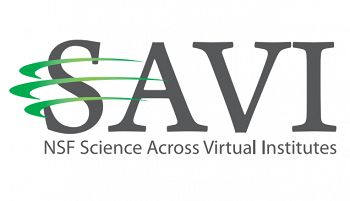
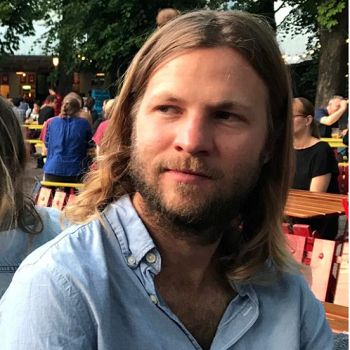
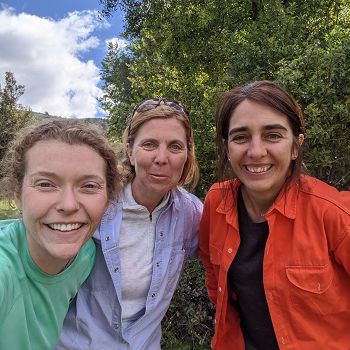
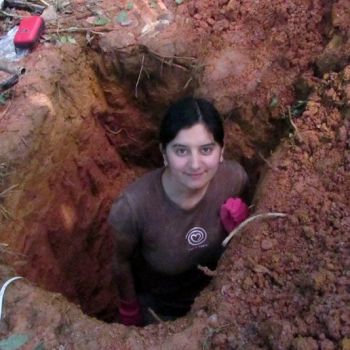

_350_350_80auto_s_c1.jpg)
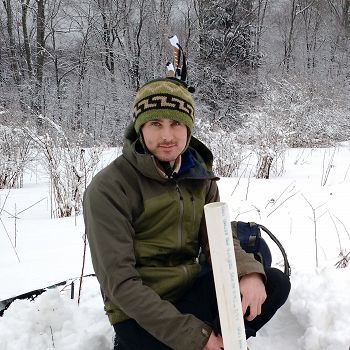
_350_350_80auto_s_c1.jpg)


